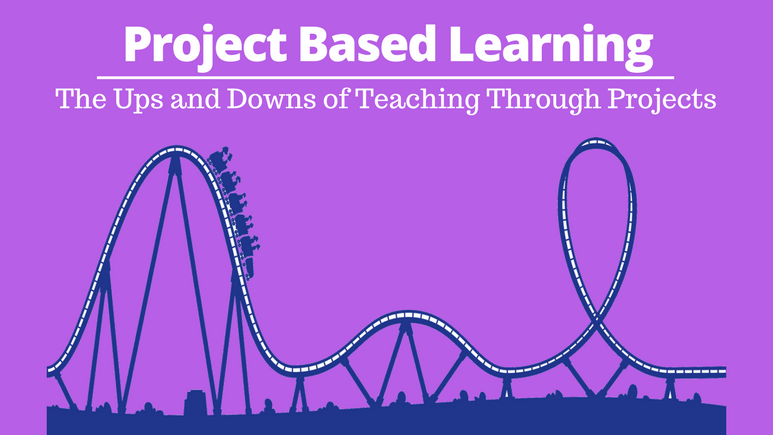
What happens with most of the work that students do in school? From my experience, most of it ended up crumpled at the bottom of my book bag.
What relevance it had with the assignment last week, the subject as a whole, or my personal life was pretty much lost on me.
Homework was homework, and if I wanted to pass the class I just had to do it.
Now, more and more teachers are coming to realize that short-term assignments last about as long in a student’s mind as they take to complete.
Some are combating this by adopting an alternative teaching approach referred to as Project Based Learning.
This refers to a way of teaching where students develop skills and learn content by tackling larger scale themed projects instead of many smaller discrete assignments.
Students are given a complex question or challenge, and a requirement to demonstrate their findings at the end, which can be in the form of anything from a presentation to a website to a community campaign.
This type of learning has already been adopted across Finland, where teachers use this method to make learning cross-curricular. A project doesn’t need to (and generally shouldn’t) belong to one academic subject, but can develop skills and build knowledge in multiple disciplines at once.
This all sounds great on paper… but putting it into action in the classroom is a whole different story.
Regular assignments are far easier to assess than projects. The answers are generally predictable, easily measurable, and comparable.
They make it easier to keep tabs on students throughout the course of the semester, and much easier to display to school admins and parents.
Teacher and author, Caitlin Tucker, recently wrote about the harsh realities of Project Based Learning in the classroom, describing the whole process as a rollercoaster.
When students are first introduced to a new project they get that stomach-dropping feeling of that first plunge.
“You want us to do what?!?”
Many students aren’t used to being asked to do complex work or projects that will have a public audience. You might be the first teacher in their lives to try it, so they might not get why.
As students get started, they might sink even lower. This is the stage of disillusionment and frustration when they realize the issue is even more complicated than they imagined.
Then as deadlines loom and there’s still lots left to do, students are likely to feel anxiety about getting everything done in time. This is especially true when there is a public component to the project as students know the teacher isn’t their only audience. This is that slow climb of the roller coaster car, as they anticipate yet another devastating drop.
…But then they reach the top. They’ve come out alright! That’s when students start to feel the satisfaction and pride of having accomplished what they never thought they could do. Then they’ll start sharing what they’ve created with anyone who will listen.
And once they’ve had a chance to do so, it’s on to the next project, and the roller coaster starts all over again.
Tips for Success
While Project Based Learning can be fun and incredibly valuable if done well, it can also be a disaster if poorly executed. Here are a few tips for how to successfully implement this approach to learning in your classroom.
Clearly define your purpose
Before you begin, have a clear picture of what skills you want students to demonstrate mastery of, and what content you want them to walk away with. If you want to keep your job, you’ll probably need to make sure that these are aligned to your state or district learning standards.
Create thoughtful groups
By conducting projects in groups students can also gain the soft skills of teamwork, leadership, communication, and more.
While students may eventually be able to pick their own groups, start by assigning teams based on what you know about the working styles of your students.
Many teachers also finish a project unit with a peer feedback survey that counts as a grade, so students hold one another accountable for doing their fair share of the work.
Think through grading
One challenge of large-scale projects is– how on earth do you grade them? Your best bet is a well-crafted rubric that breaks down the project into specific categories. Make sure to use kid-friendly language so that students can use this rubric to assess their own work as they go.
Make a calendar
It’s a good idea to have a set calendar the day you begin a project. This will allow students to see what they’ll be working on each day and how long the project will take altogether.
Build in time for feedback
When you make your calendar, include a few sessions of structured peer feedback. Not only can peer feedback be useful to receive, but often the act of giving feedback helps students realize the areas for improvement in their own work.
Make it authentic
The more you can make the final product of the project something that students will share with the real world, the more engaged they will be. Make a website to share with your school board, present projects to younger students, invite a panel of experts to the project presentations, or have students create a mini-documentary that will be played at the next school assembly.
Higher stakes mean more investment.
Project Based Learning isn’t guaranteed to be a smooth ride, but if you stick with it, it can be an incredible learning experience for you and your students.
Have you tried making the switch to Project Based Learning in your classroom? What were your biggest struggles? And what have you discovered makes it all more bearable?



Leave a Reply